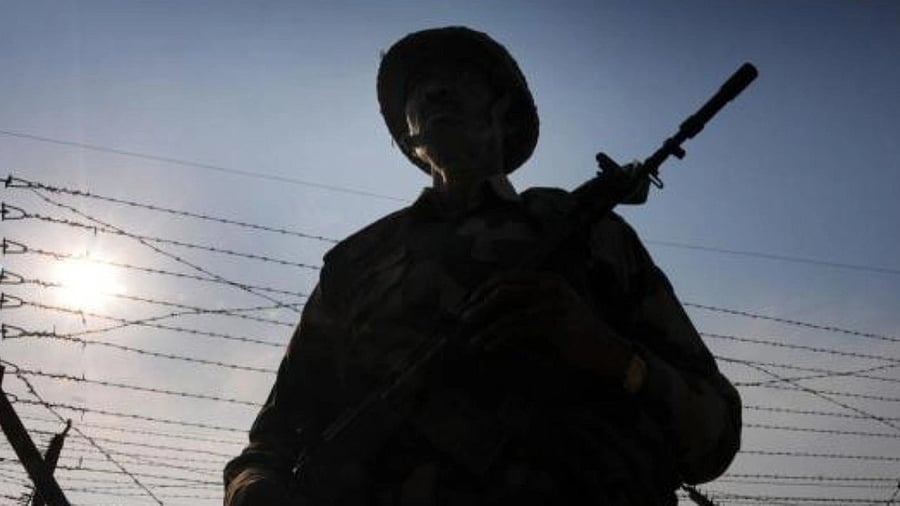
Border Security Force (BSF) personnel guard.
Credit: PTI Photo
Srinagar: In a serious escalation of hostilities, the ceasefire agreement of 2021 between India and Pakistan along the Line of Control (LoC) and the International Border in Jammu and Kashmir is coming under renewed strain following the recent terror attack in Pahalgam that claimed the lives of 26 civilians.
Although there has been no reported use of heavy-calibre weapons such as 155 mm artillery guns or 120 mm mortars, the sudden and sustained spike in cross-border firing has raised alarm among security officials. They warn that this shift may indicate a change in Pakistani tactics aimed at destabilising the LoC region.
Defence officials confirmed that after a near-total calm along the border over the past three years, with only one ceasefire violation (CFV) in 2022, none in 2023, and two in 2024, there has now been a sharp increase in incidents. For seven consecutive nights, Indian forward posts from Kupwara in north Kashmir to Poonch in Jammu division have come under small arms and light machine gun fire.
On February 25, 2021, the armies of India and Pakistan had reaffirmed their commitment to the 2003 ceasefire agreement, leading to a dramatic reduction in violence along the border. That calm largely held until the fresh violations erupted last week.
The Indian Army described the incidents as “unprovoked small arms fire” initiated from across the LoC, prompting “measured retaliation.” Earlier on Tuesday, India warned Pakistan over ceasefire violations following unprovoked firing along the Line of Control (LoC) in Jammu and Kashmir.
The warning came during a hotline conversation between the Directors General of Military Operations (DGMOs) of India and Pakistan, amid rising tensions in the wake of the recent Pahalgam terror attack.
While the current hostilities have not yet escalated to the intense artillery duels witnessed prior to 2021, the resumption of nightly firing has deeply unsettled residents in border villages. Many have begun renovating underground bunkers, commonly referred to as “Modi bunkers,” which served as crucial shelters during previous bouts of cross-border shelling.
“We haven’t slept properly for days,” said Rehmat Ali, a resident of the Uri sector in Baramulla. “Every night there’s gunfire. We keep our children close and stay indoors. We are scared this could turn into something much worse.”
In Poonch, locals shared similar fears. “The fear is back,” said Naseema, a housewife. “We thought the ceasefire brought peace, but now we’re again worried about stray bullets and shelling.”
Security analysts have called the extension of firing into the Jammu division a significant departure from recent patterns, warning that it could severely test the ceasefire framework built over the last four years.
They also point to the timing—coming so soon after the Pahalgam terror attack—as a potential indicator of a coordinated attempt to raise tensions and facilitate infiltration. “This could be part of a broader strategy to keep the LoC hot as summer approaches and traditional routes of infiltration reopen,” a senior security official said.